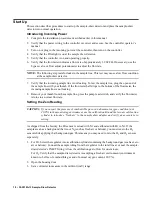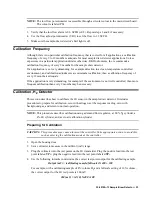
35-3010A-13 Sample-Draw Detector • 25
6. Disconnect the sample tubing from the sample-draw detector’s inlet line.
7. Unscrew the regulator from the calibration cylinder.
NOTE:
For convenience, leave the regulator connected to the sample tubing.
Returning to Normal Operation
1. Remove the voltmeter leads from the test points.
2. Reconnect the incoming sample line.
3. Wait 1 to 2 minutes to allow the calibration gas to be drawn out and the reading to stabilize.
4. Close the housing door.
5. Store the components of the calibration kit in a safe and convenient place.



































